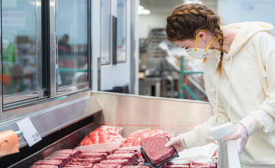Fight for Food Safety
Commentary | Fight for Food Safety
Commentary | Fight for Food Safety
How the presidential election could affect the food and agriculture industry
Read MoreStay ahead of the curve. Unlock a dose of cutting-edge insights.
Receive our premium content directly to your inbox.
SIGN-UP TODAYCopyright ©2024. All Rights Reserved BNP Media.
Design, CMS, Hosting & Web Development :: ePublishing







